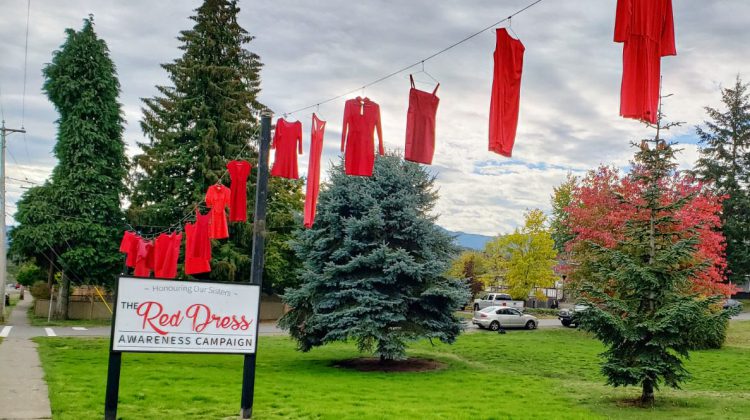After a few years of being unable to gather, Red Dress Day will be held at Simms Park Friday for an in-person day of learning.
The event will run from 1 p.m. to 6 p.m. and is being held by the MIKI’SEW Métis Association and the Indigenous Women’s Sharing Society.
According to the association’s women’s representative Myrna Logan, the biggest difference this year will be being able to gather, and they are wanting people to come and learn and show support.
“The things we want to focus on is not so much people feeling bad but just the awareness, the education piece, that this is still an issue in Canada,” said Logan. “That there is a significantly higher number of Indigenous girls and women and two spirit people that go missing or are murdered than Caucasian.
“We really would like people to come out and support, we can do a bit of education on site. What I really recommend people do is to go to the internet and find out about the reports so they know about the numbers, they know if there’s anything they can do differently in their lives.”
According to data from the Canadian Government, Indigenous women represent 10 per cent of the total population of missing women in Canada. That figure comes from a 2015 report that found 1,750 women were reported missing for at least 30 days by the Canadian Police Information Centre.
Of the 174 (10 per cent) Indigenous women, 111 were identified as missing due to “unknown” circumstances or foul play was suspected.
The report also found that between 1980 and 2014, 6,849 homicides of women were reported to police in the country. Of those, 16 per cent were Indigenous women. Since 1991, the number of non-Indigenous women homicides has decreased, while it has remained relative stable for Indigenous women.
In 2014, the government says the rate of homicide of Indigenous women was almost six times higher than non-Indigenous at 3.64 per 100,000.
Half of solved homicides of Indigenous women were committed by a family member, according to the government. Between 1980 and 2014, 53 per cent were committed by a family member, 26 per cent by an acquaintance and eight per cent by a stranger.
The day for Logan means going out and supporting families and individuals that have been personally touched by missing and murdered Indigenous women, girls and two spirit people.
“They are in this in a whole different way than the average person,” said Logan. “For them to feel like their loved ones have not been forgotten by the general public and that the general public is aware of the situation in Canada.
“As long as there’s awareness brought to this problem, hopefully there will be some change.”
Logan adds they hope to see less overrepresentation of missing and murdered Indigenous women as people become more aware.
The event will start with opening ceremonies and Logan says they will be hearing from survivors who have gone missing and survived.
There will also be educational tables around the park, activities to make red dresses among others.
“The main thing we want people to do is take their time, walk through the park,” said Logan. “If they can wear red that day, and just come and show your support by showing up.”
More information about the National Inquiry into Missing and Murdered Indigenous Women and Girls can be found here.






